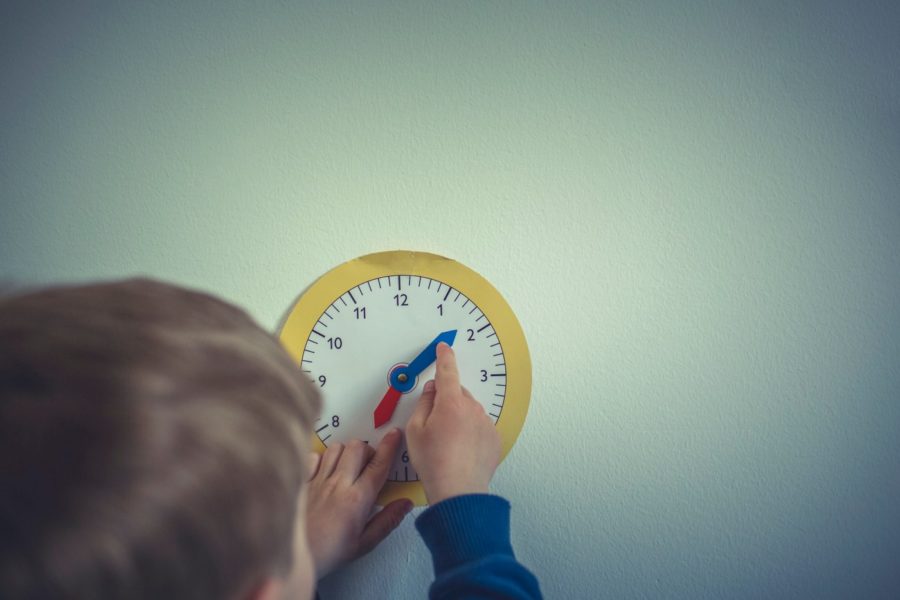
Photo Credit: Markus Spiske — Unsplash
A holiday or a tradition? Learning about Ramadan in early childhood and elementary classrooms
Ramadan marks the 9th month of the lunar calendar, a calendar that goes back to Judaic, as well as Asian traditions. Since lunar months follow a full cycle of Moon phases, each lunar month equals to about 29 or 30 days. This is a concrete, visually observable calculation, as it is easy to mark the beginning of a new lunar month with the new crescent appearing in night sky, with full Moon being in the middle of the month, and waning Moon through the end. This means the beginning of each Ramadan is about 10 days earlier than the prior year on our common calendars due to the shorter length of most months. For example, in 2021, Ramadan began on April 12th, and in 2022, it begins on April 2nd.
Is Ramadan holiday the same thing as the month of Ramadan?
The month of Ramadan includes a fasting period from dawn to dusk for teenagers and adults during each day of the 29–30 days. The Ramadan holiday (Eid-al-Fitr) is the celebration at the conclusion of the fasting period and lasts 3 days — the first three of the next lunar month. If you would like to inform all of your parents about celebrating the Ramadan as a festive event, especially for early childhood classrooms, this festival may be a good time as it is customary to make sweets, candies, and otherwise exchange gifts to celebrate the successful conclusion of fasting and spiritual growth gained throughout the month, and it is a time when Muslim children who prefer to fast can enjoy daytime eating again.
What to expect during the month of the Ramadan, especially when teaching younger children
Children before the time of puberty are not expected to fast at all. However, since this practice is learned as a family tradition, there are family dinners at dusk, and there are also early breakfasts before dawn which elementary school children may like to join whether they fast or not — even just for food, fun, and conversations. As a result, children’s sleep patterns may shift to shorter sleep hours and some late afternoon naps at home when needed. This may also mean that many of the younger children may like to taste the experience of fasting in incremental numbers of days according to their ages, as they gradually join this family ritual. Children under the age of 7–8 would not typically be allowed by parents to fast when they express interest. In many families, children in early elementary ages who would like to fast may be discouraged from the long day of fasting and may be offered a happy medium, a “kid friendly fast” from dawn to noon — especially when Ramadan coincides with the summer months with long daytime hours. Other parents may allow children to fast one or two days each year, and allow them to increase the number as they get ready for the full month at the time of puberty.

Ramadan is also a time for reflection, closeness, community building, strengthening of willpower and self-discipline, purification of intentions, spirituality and inner peace. Families try to give more to charity locally and globally, provide food and meat for homeless shelters and other families in need in their area, and host family and friends in their homes for festive meals in the evening, as they break fast. In some families, clothing may appear more modest during Ramadan, as some girls and boys may want to wear head coverings to have a spiritual experience. Since Ramadan also marks the beginning of the revelation of the Qur’an (1412 years ago), another goal in families may be increasing the awareness of the original Arabic scripture and the meaning and interpretation of Muslim’s holy book, Qur’an, in respective languages; accordingly, children may be encouraged to begin learning or improve upon reading of the ancient scripture and understanding its meaning in English and other languages spoken at home.
What are my Muslim students’ needs during this month? How can I support them?
Educators may benefit from assessing the family plans first. If you know there will be students who will fast some days, see whether they need a gym pass, or still prefer to join physical activities. For the most part, lunchtime may really be the only consideration; it may be helpful to ask if children prefer to sit with friends as they eat in the classroom, or in the cafeteria, spend time outside in playground, or if they rather stay in the classroom and rest, read, or do some light activities. Younger children usually do not like to be separated from friends, or miss out opportunities to play when they fast. For older children, middle schools and high schools may consider allocating some special tables in cafeteria, where students who fast can join and chat.
Educators may do well considering that some families may identify as Muslim, but not be practicing, so they may not be looking for any accommodations. In addition, some children may not prefer to discuss their practices in class due to discrimination and biases, so they may prefer to go quiet. This tell us the need for educators to further normalize Ramadan as any other holiday or tradition, and not treat as taboo when several other holidays are celebrated. On the other hand, there are Muslim families who may be quite open and willing to introduce some of their practices to support the educators in bringing awareness about Ramadan. They may offer resources, gifts and present child friendly information. As you talk about Ramadan, it may help to draw parallels with fasting in Judaism and Christianity, as all three are rooted in the common Abrahamic tradition, and encourage children in making other multicultural connections.
What are some resources for young children that include information on Ramadan?
There are many brief and informative children’s books about Ramadan, geared for a non-Muslim audience. Some have their forgivable shortcomings, so before we explore some choices, a couple considerations may be helpful. Avoiding stereotyping images and ideas is important in finding good resources. For example, some books and information depict all Muslim children as new immigrants or refugees, marginalizing their identity as “outsiders”. In fact, many of the young Muslim children are born and raised in the country, sharing common traditions, food, school life, and leisure choices. Also, common stereotypes in the visuals such as a specific race, clothing, a certain Ramadan practice, or certain food depictions are not accurate, as Muslim cultures are so diverse, spanning over several continents, countries, cultures, languages, clothing, food, and traditions.
click here to access this list of Ramadan related children’s books